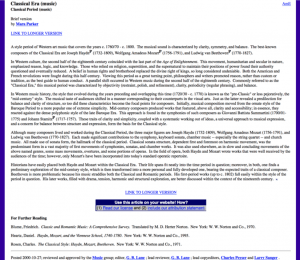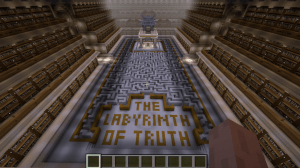When designing software, a learning tool that aids developers is skeuomorphism. Skeuomorphism is where something digital mimics a physical, analog counterpart. For example, the sound of a camera shutter when you take a picture on your iPhone, or Google Calendar mimicking a paper planner. Skeuomorphism gives comfort to the user of a software and increases the usability of an application. Where skeuomorphism comes in most handy, however, is when you consider it alongside remediation.
Before Wikipedia, there was Nupedia. In Larry Sanger’s memoir of Nupedia and early Wikipedia, Sanger contends that Nupedia appeared “to have died of its own weight and complexity.” In the screenshot below, at a glance, an article is already dense to look at–and that isn’t even the full article! But Sanger reckons that Nupedia “could have been redesigned and adapted.” Wikipedia is friendlier and easier to navigate, as we all know. It both mimics and replaces the thing it seeks to replace: the bound encyclopedia. This remediation of the encyclopedia expands the accessibility of the thing, but it’s the skeuomorphism that allowed Wikipedia to float where Nupedia drowned.
Wikipedia provides a table of contents, headings, and hyperlinks to relevant details. Indeed, Wikipedia not only absorbed the encyclopedia, but improved upon it. The convenience of hyperlinks obviates the necessity to flip and peruse pages. And yet, Bolter and Grusin stress that “the Web is even more aggressive in breaking down” the barrier between “physical reality and its mediated presentation,” thus “insiting on the reality of mediation itself.”
And yet, Wikipedia might have some shortcomings in its remediation of the encyclopedia. Sanger stresses that he is “not suggesting that Wikipedia needs to be replaced with something better…it needs to be supplemented by a broader, more ambitious, and more inclusive vision of the overall project” (his emphasis). This point brings me to the topic of my final project: The Uncensored Library. This library does not have physical doors: it exists in Minecraft, the best-selling computer game of all time. But this library remediates a physical space by acting as an accessible library for typically censored journalism, like that of Jamal Khashoggi. By my suggestion that space itself can be remediated, such as the concept of a “third space” or “affinity space” (admittedly something I still have to research further), I argue that this remediation of a library attempts to circumvent journalist censorship, but also answers Grusin and Bolter’s question of “why return to the printed library?” The Uncensored Library doesn’t do enough. It is ambitious, but only houses a very minimal number of texts. It does circumvent censorship laws in restrictive countries, but for how long?
Nevertheless, it is accessible: The Uncensored Library is a distinct skeuomorphism of a real-life library. It has shelves and stairs, hallways and doors. You press “w” to walk forward, you right click to pick up a book. It looks like a library. Walking in on pictures of assassinated journalists, having to look up at their black-and-white faces, affected me as much as seeing the memorial in real-life would have. It feels like a real space. If The Uncensored Library was not a skeuomorphism of a library–that is to say, a place I did not have to enter of my own volition—and was instead a Wikipedia entry with Jamal Khashoggi’s face and perhaps a link to an article or two of his, I would not have been as moved as I was when walking through the Library’s physical doors.





I’ve never heard this term before, but it gave me an idea for a potential project my research class! If Wikipedia mimics encyclopedias and the iphone mimics a camera, students can create a new technology to replace an outdated one!! Thank you for the inspiration!